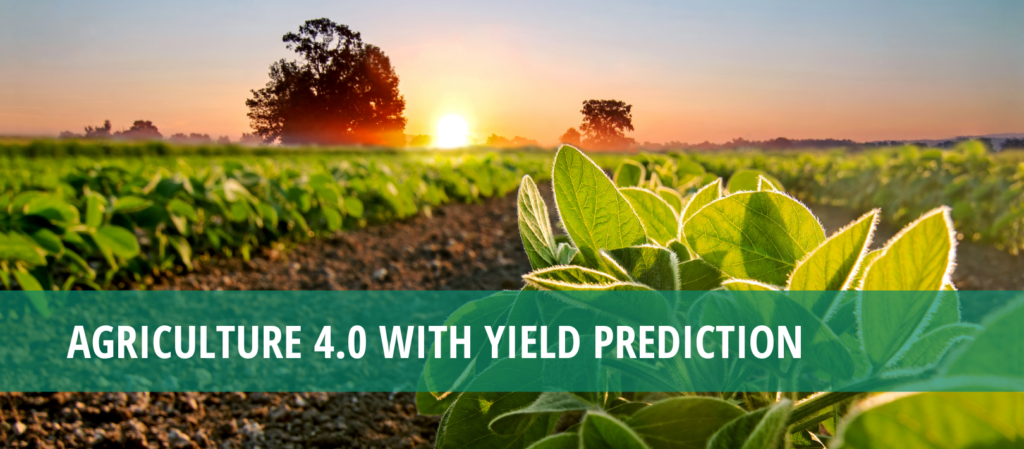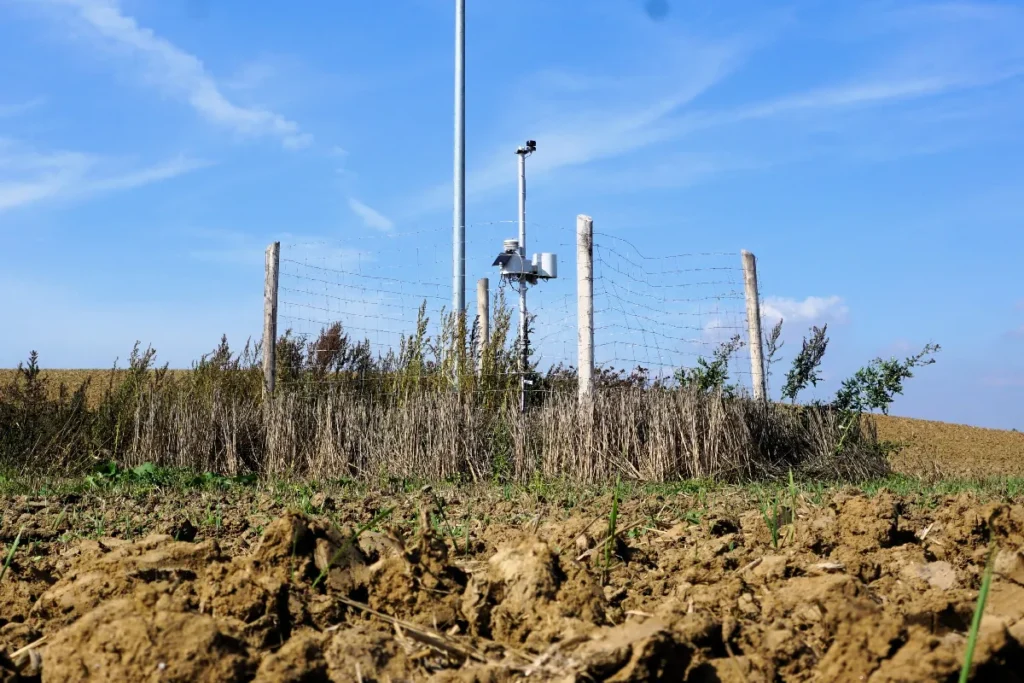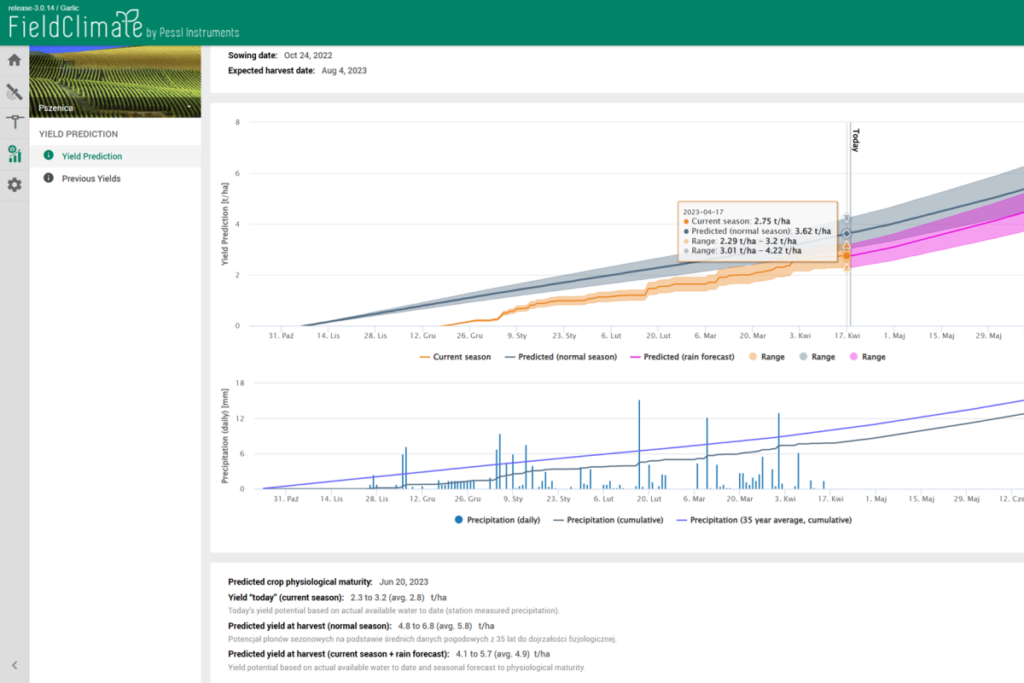Enhancing Agricultural Management with METOS® Yield Prediction: A Revolutionary Approach to Informed Decision-Making.
Agriculture 4.0 with Yield Prediction
Agriculture is not an easy occupation, as farmers around the world discover anew each season. Yields are influenced by a range of variables, the skillful assessment of which can determine the profitability of production. There is no point, for example, in increasing fertilization when a low yield is expected. This is where Agriculture 4.0 comes in handy, in the form of a computer program that estimates yields primarily based on water availability.

METOS POLSKA Sp. o.o. introduces a solution known as the Yield Prediction. The company serves as the representative for an Austrian provider specializing in advanced technology solutions for crop monitoring, Pessl Instruments, and their range of products, that is available under the METOS® brand.
FieldClimate platform
The internet platform FieldClimate serves as the space where all data collected from METOS® devices is gathered and stored. It offers a range of functionalities to assist in making important decisions related to agricultural management. We have previously written about our practical utilization based on data from weather stations.
The Yield Prediction Tool reduces the risk of economically unjustified overinvestment in a particular crop. During the growing season, it allows for reacting to changing conditions and adjusting the level of fertilization and plantation protection accordingly.says Marek Wilanowski, Country Manager of METOS POLSKA Sp. o.o.
The latest Yield Prediction Tool allows the estimation of crop performance based on water availability. Basic settings require nothing more than entering information about the crop, its sowing date, and specifying the approximate harvest date. The forecast is available at any time before, during, and after the growth period. Thanks to this innovative approach, farmers can make important management decisions during the growing season. These decisions may include irrigation, the application of pesticides, and fertilizers to achieve profitable yields.
The most important thing is water
Undoubtedly, the primary factor influencing crop yield is water. Consequently, the significance of soil moisture and the distribution of rainfall throughout the growing season cannot be overstated. While various factors, including soil fertility, temperature distribution, and the farmer’s interventions, play a role in the growth and development of plants, these efforts in soil cultivation, seed sowing, fertilization, weed control, and plant protection may prove futile if an adequate water supply is lacking.
The importance of the role of a weather station
One of our agro-meteorological stations is situated approximately 14 km away from the official weather station at the airport. It was revealed that during a single intense rainfall event, within just thirty minutes, there was an approximately 80 mm disparity in precipitation between these two locations. Therefore, you should not rely on general data, but use those information that are as close to the field as possible,suggests Marek Wilanowski.

The results
The Yield Prediction results available in the Yield Prediction Tool are divided into 4 areas:
- Settings Overview includes detailed information on crop type, stations used, report generation date, sowing date and expected maturity date.
- Yield Prediction charts provide detailed information on the current yield forecast for an average and range of values based on station-measured rainfall and long-term normal rainfall for the current date. Yield forecast to physiological maturity is predicted based on long-term normal rainfall and seasonal rainfall forecast.
- Rainfall charts provide detailed information on daily rainfall totals, cumulative rainfall totals and long-term normal rainfall for the field.
- Yield Prediction Results Overview provides detailed information on today’s yield (current season, average and range of values), expected harvest yield (normal season, average and range of values), and expected harvest yield (current season + rainfall forecast, average and range of values).
Satellite photos
In addition to offering Yield Prediction, the FieldClimate also provides satellite imagery tailored to a particular field or crop area. The provided indicators, derived from the Sentinel 2 satellite with a 10-meter resolution, include the leaf area index (LAI) and the normalized difference vegetation index (NDVI).
According to Marek Wilanowski,
the resolution of field images captured by the Sentinel 2 satellite and utilized by the FieldClimate online platform is 10 meters.
Based on the yield prediction in the growing zone and satellite information, the farmer can adjust important management decisions during the growing season regarding water, diseases, insect control and additional fertilizer applicationconcludes Marek Wilanowski.

Yields are influenced by a number of variables, the skillful assessment of which may determine the profitability of production. But how to do this when the plants are still small? This is where Agriculture 4.0 comes in handy.
